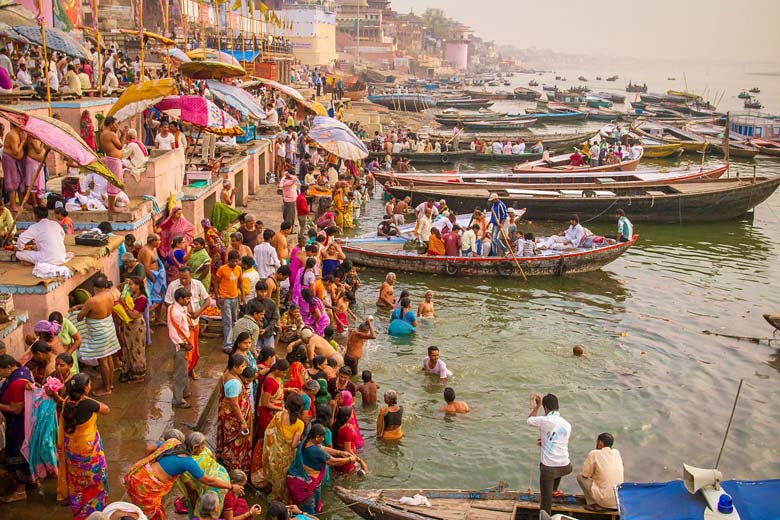Must Do Things in Varanasi
Varanasi has been the religious capital of Hinduism through all recorded time. No one knows the date of the city’s founding, but when Gautam Buddha came here in 550 BC to deliver first teaching, he found an ancient and developed settlement .Contemporary with Babylon, Nineveh and Thebes, Varanasi has been called the oldest continuously inhabited city on earth .
Find below the list of Swan Tours top13 must do things to do in Varanasi for the tourists visiting the city.
#1. Alamgir Mosque
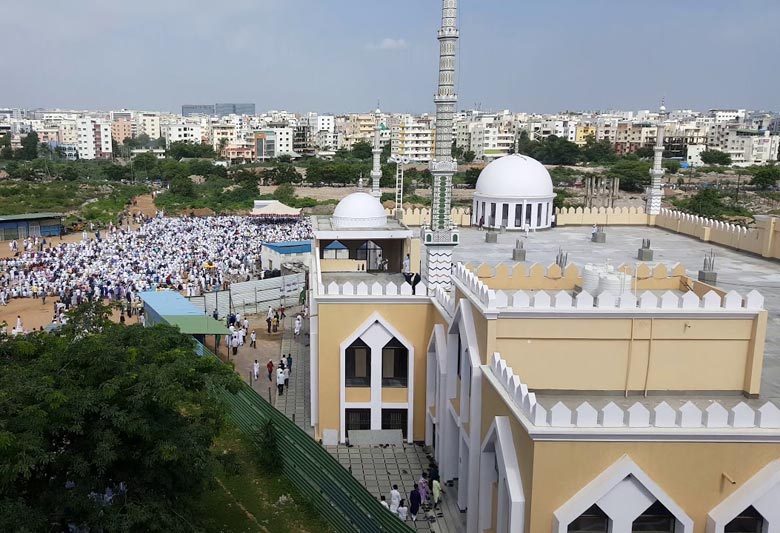
Alamgir Mosque
Overlooking the Ganges from a dramatic high point, the Alamgir Mosque is a creation of the Mogul emperor Aurangzeb. Destroying the 17th-century temple Beni Madhav ka Darera, which had been dedicated to Vishnu, Aurangzeb built this mosque with an odd fusion of Hindu (lower portions and wall) and Muslim (upper portion) designs. Panchganga Ghat, down below, is an important bathing point, particularly on Makar Sankranti (January 14), when the sun crosses the Tropic of Capricorn as the earth shifts on its axis following the winter solstice. Ei From Dashashvamedh or Manikarnika ghats, head north along the river; the mosque towers above Panchganga Ghat.
Also Visit – https://www.swantour.com/luxury-tours-in-india/golden-triangle-tour-with-varanasi.php
#2. Bharat Kala Bhavan Museum
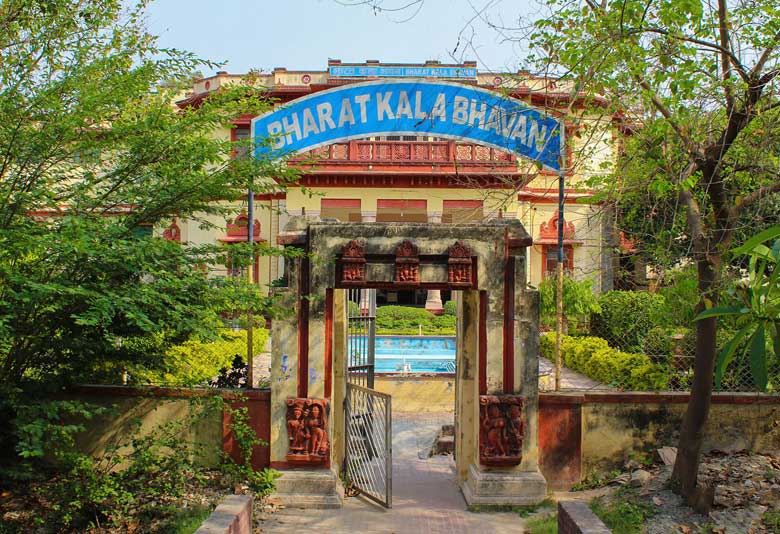
Bharat Kala Bhavan Museum
No one interested in Indian art should miss this museum on the campus of Banaras Hindu University, just south of Varanasi’s traditional boundary. The permanent collection includes textiles, excellent Hindu and Buddhist sculptures, and miniature paintings from the courts of the Moguls and the Hindu princes of the Punjab Hills. One sculpture with particular power is from Varanasi’s immediate area—a 4th-century Gupta-dynasty frieze showing Krishna (an incarnation of Vishnu) holding up Mt. Govardhan to protect his pastoral comrades from the rain. Have your car or rickshaw wait, as transport can be hard to find on the university’s sprawling campus. Eg Banaras Hindu University, Lanka.
#3. Chausath Yogini Temple
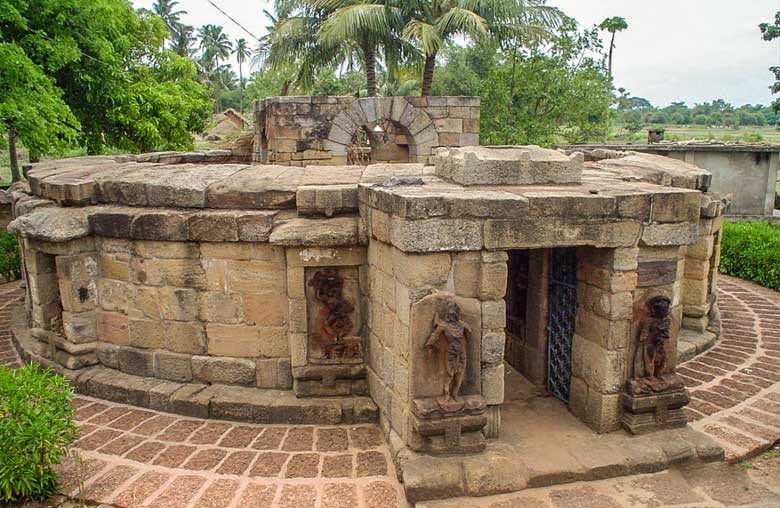
Chausath Yogini Temple
The interesting temples between Prayag and Asi ghats include this one, which is at the top of a particularly steep set of steps by the ghat of the same name. Originally devoted to a tantric cult that is also associated with an important ruined temple at Khajuraho, it’s now devoted to Kali (the goddess most popular with Bengalis), who is known here simply as “Ma”—Mother. The worshipers here now are mainly widows from Varanasi’s Bengali quarter; in the early morning you’ll see these women coming for the darshan (vision) of Kali after bathing in the Ganges.
#4. Dashashvamedh Ghat
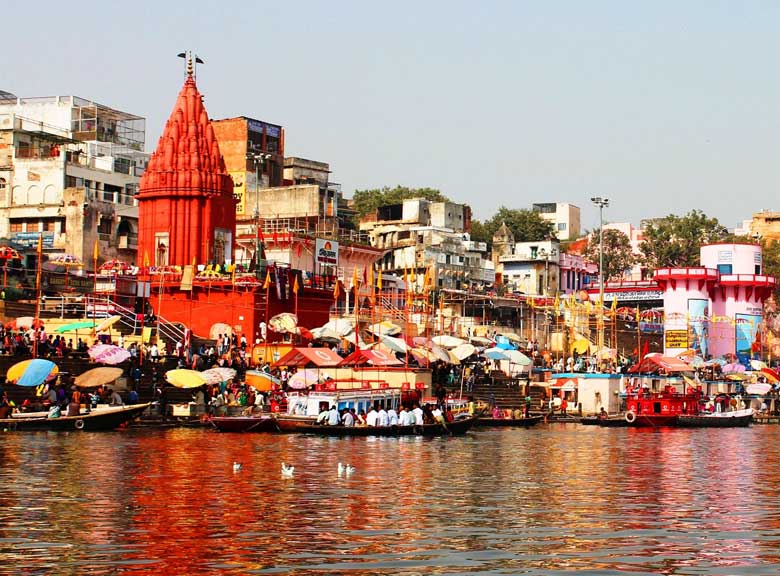
Dashashvamedh Ghat
About 70 stepped ghats line a 4-mi stretch of the Ganges, effortlessly wedding the great Hindu metropolis to the river. Numerous lingas remind pilgrims that they’re under Shiva’s care here. If you decide to hire a boat, an essential Varanasi experience, go to Dashashvamedh Ghat, the unofficial “main” ghat for most purposes. The best time to see the ghats is at sunrise, when a solemn group of people and even animals—lit by the sun’s darkly golden first rays—hover on the water’s edge, bent on immersion in the holy stream. As you float on the river, you’ll see young bodybuilders exercising: these are members of some of the city’s many wrestling clubs. Older men sit cross-legged in meditation or prayer, and pandas seated under huge umbrellas offer prayers for their pilgrim clients. Some devotees drink from the polluted water. A carcass may even float by head east to the water from Godaulia Crossing, the central traffic circle in the Chowk district.
#5. Dhobi Ghat
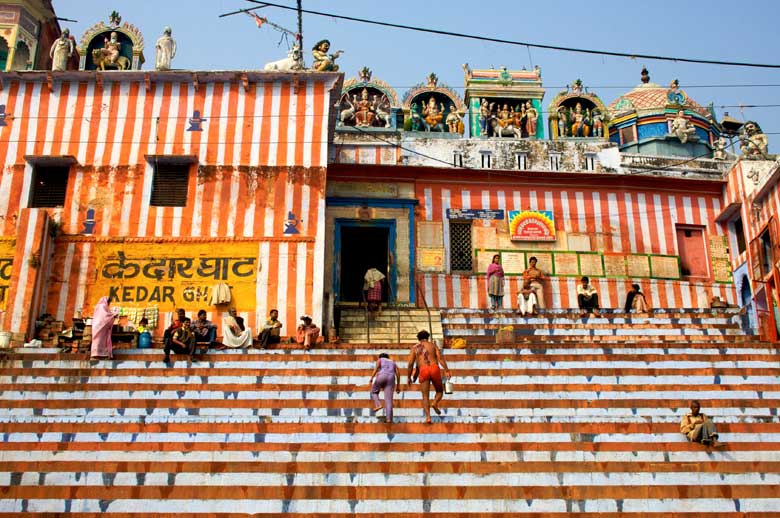
Dhobi ghat varanasi
At the Dhobi Ghat, south of Dashashvamedh, washer men and -women do early-morning laundry by beating it against stones in the river while their donkeys bray disconsolately on the bank. This may be the sight that moved Mark Twain to declare that “a Hindu is some-one who spends his life trying to break stones with wet clothes.”
#6. Durga Temple
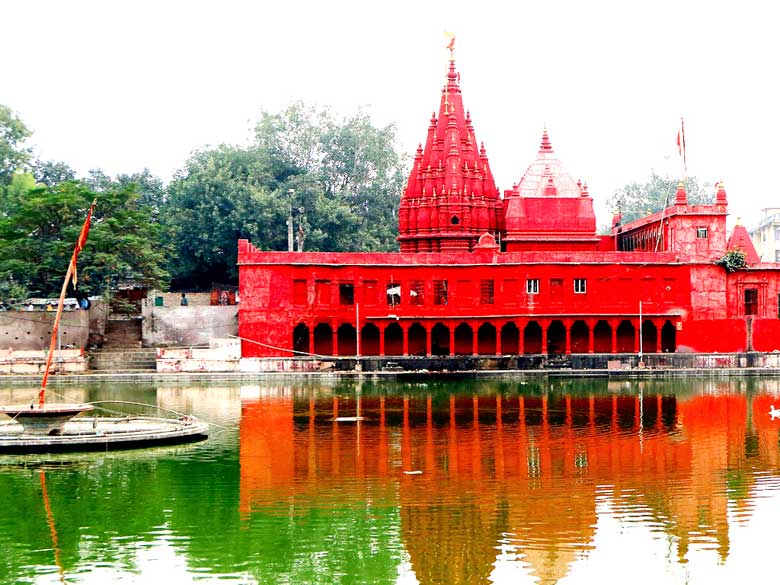
Durga Temple Varanasi
Dedicated to the goddess Durga, Shiva’s consort, this y shrine stands beside a large, square pool of water du west of Asi Ghat. The shikhara is formed on top of five lower spires, a convergence symbolizing the belief that all five elements of the world (earth, air, wind, water, and ether) merge with the supreme. This shrine is also called the Monkey Temple—the pests are everywhere, and they’ll steal anything.
The Vaatika Cafe on the riverbank at Asi Ghat serves excellent pizza made with yak-milk cheese from Nepal, as well as pasta dishes, bona fide espresso, and other unlikely delicacies.
#7. Gyanvapi Mosque
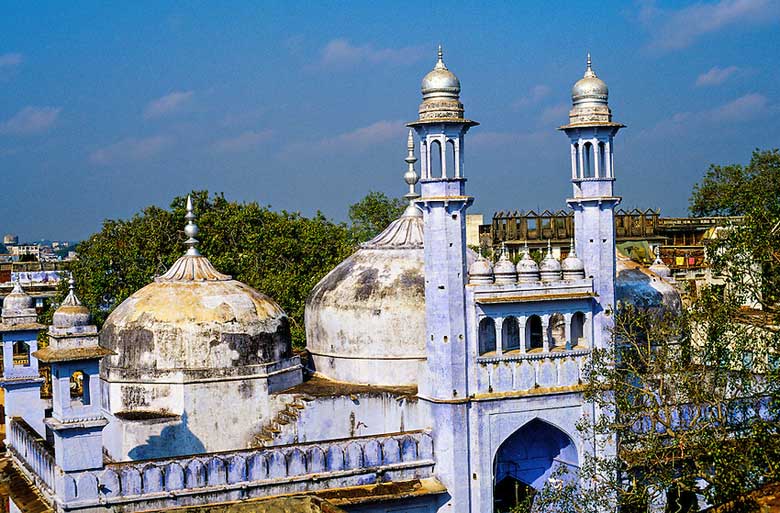
Gyanvapi Mosque Varanasi
Mogul emperor Aurangzeb pulled down the original Vishveswara Temple to erect this mosque, and the building’s foundation and rear still show parts of the original temple. The tallest of the mosque’s minarets, which dominated the skyline of the holy city, collapsed during a flood in 1948. The surrounding area—just next to Kashi Vishvanath, the Golden Temple—has been the focus of Hindu revivalist attempts to deconsecrate the site of the former temple, and is currently staffed with police and fenced with barbed wire. It’s normally very sedate, however, and is an important starting point for Hindu pilgrims.
#8. Kashi Vishvanath Temple
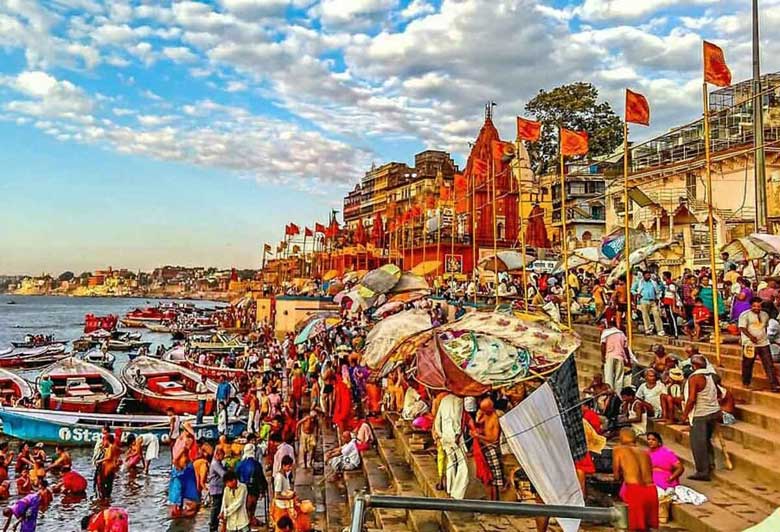
Kashi Vishvanath Temple
Dedicated to Shiva, this temple in the old city is the most sacred shrine in Varanasi. Known as the Golden Temple for the gold plate on its spire—a gift from the Sikh maharaja Ranjit Singh in 1835—the temple is set back from the Ganges between the Dashashvamedh and Manikarnika ghats. Vishvanath is technically off-limits to non-Hindus, so your best bet is to glimpse it from the top floor of the house opposite (pay the owner a small fee). You’ll see men and women making offerings to the linga in the inner shrine. The present temple was built by Rani Ahalyabai of Indore in 1776, near the site of the original shrine, which had been destroyed by Aurangzeb.
From the lane that leads from Kashi Vishvanath Temple to Dashashvamedh Road, turn right toward Godaulia Crossing. To the left, in the second-to-last cul de sac before the crossing (opposite a sign for the Union Bank of India), a short lane lined with cloth merchants leads to the friendly, slightly divey Ayyar’s Café (2) Raman Katra, Dashash-vamedh Rd.). Here milky, sweet South Indian filter coffee and South Indian desserts are served on worn marble tables at a slight remove from the city’s tumult.
#9. Kedareshvara Temple
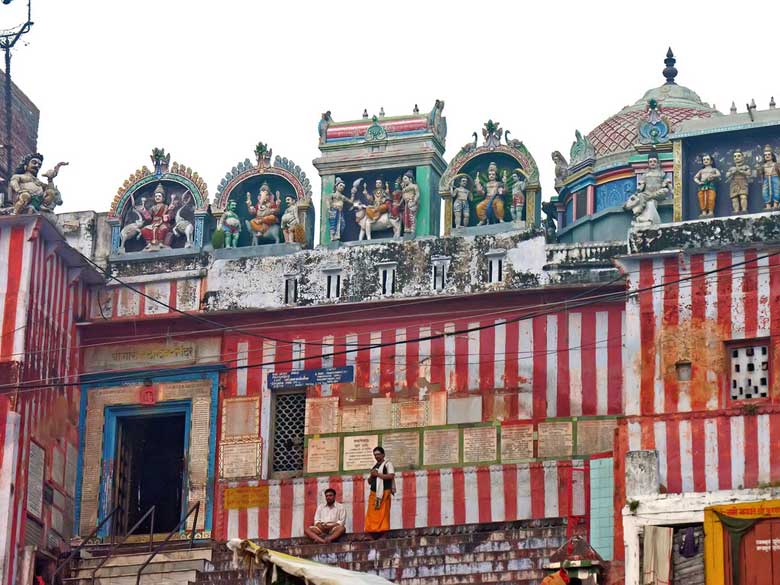
Kedareshwara Temple Varanasi
You’ll recognize this temple, the most important Shiva temple in this part of town, by its candy-stripe red and white walls. Take off your shoes at the small rear door at the top of the ghats to enter. The linga here is an unsculpted stone and is said to have emerged spontaneously when a pure-hearted but feeble devotee of Shiva prayed for a chance to visit the famous Kedareshvara Shiva temple in the Himalayas. Shiva is the god of destruction and fierce in aspect but, paradoxically, he is famously kind to his devotees, or bhaktas; in this myth, Shiva was touched by his bhakta’s piety, so instead of bringing him to the mountain, Shiva brought his own image to the bhakta. The linga emerged out of a plate of rice and lentils, called kicchari, which believers see in the rough surface of the linga’s natural stone.
#10. Manikarnika Ghat
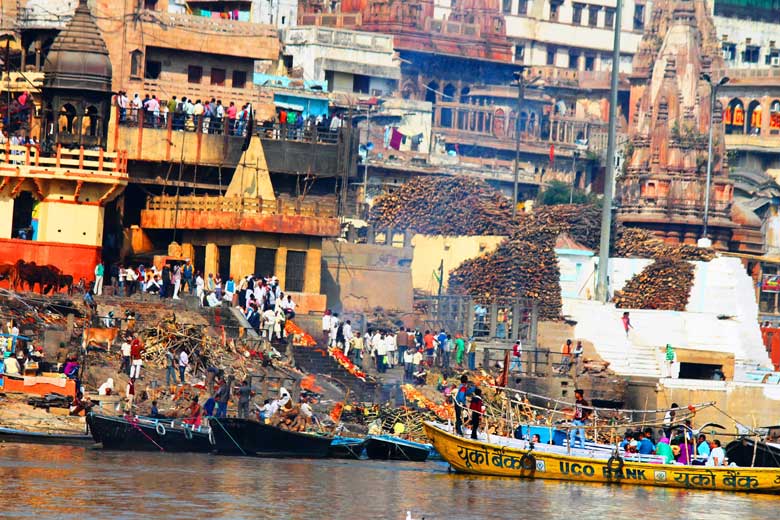
Manikarnika Ghat Varanasi
Thin blue smoke twists up to the sky from fires at Varanasi’s chief cremation center (Harish Chandra Ghat, upstream, is the smaller one), which is actually adjacent to the ghat itself. Bodies wrapped in silk or linen—traditionally white for men and red or orange for women are carried through the streets on bamboo stretchers to the smoking pyres. After a brief immersion in the Ganges and a short wait, they body is placed on the pyre for the ritual that precedes the cremation. Funeral parties dressed in white, the color of mourning, hover with their deceased. Photographing funeral ghats is strictly forbidden, but you are allowed to watch.
#11. Ram Nagar Fort and Palace
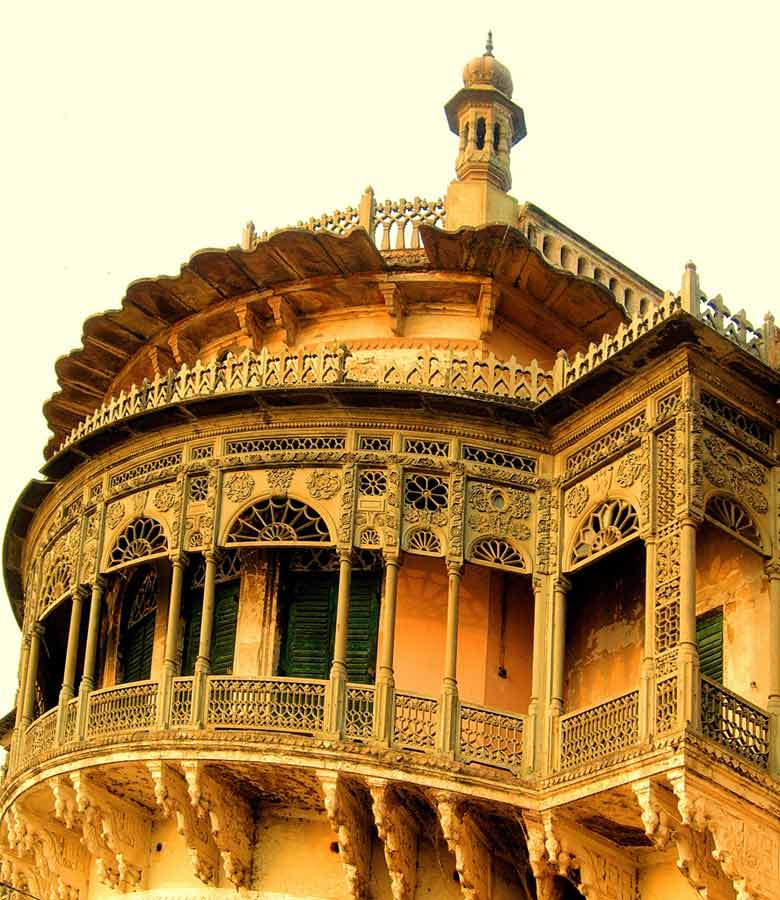
Ram Nagar Fort and Palace Varanasi
Across the Ganges from town is the residential palace of the former maharaja of Varanasi, who still lives here and performs important ceremonial and charitable functions. The Durbar Hall (Public Audience Chamber) and Royal Museum have collections of palanquins, furniture, arms, and costumes. The palace was built to resist the floods of the monsoon, which play havoc with the city side of the river.
#12. Sankat Mochan Temple
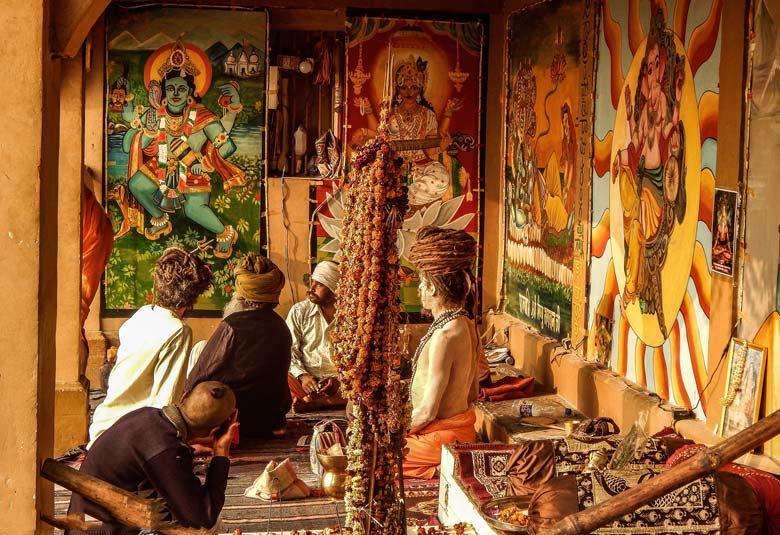
Sankat Mochan Temple Varanasi
Sankat Mochan, meaning “Deliverer from Troubles,” is one of the native Banarasis’ most beloved temples. While the city has now encroached all around it, the building still stands in a good-sized, tree-shaded enclosure, like temples elsewhere in India. (Most temples in Varanasi are squeezed between other buildings.) While most of the city’s major shrines are dedicated to Shiva or various aspects of the mother goddess, Sankat Mochan belongs to Hanuman, the monkey god revered for his dedicated service to Rama, an incarnation of Vishnu whose story is told in the Ramayana epic. The best time to see Sankat Mochan is in the early evening, when dozens of locals stop by for a brief visit at the end of the work day.
#13. Shitala Temple
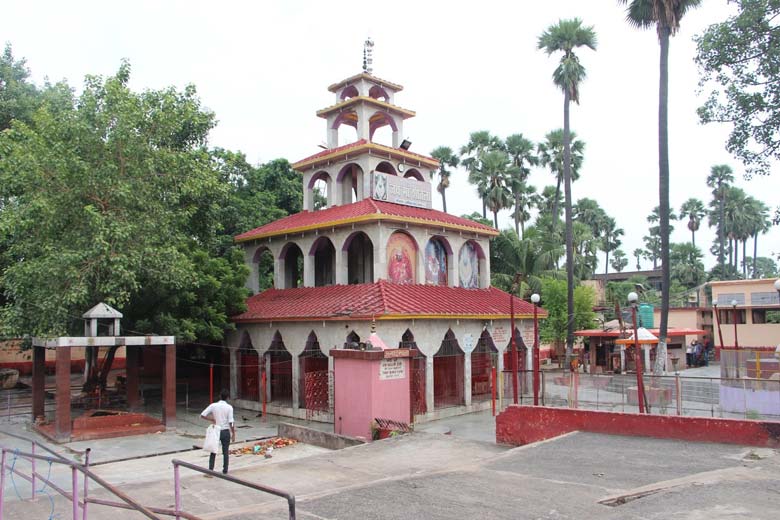
Shitala Temple Varanasi
This unassuming but very popular white temple is dedicated to Shitala, the smallpox goddess. Despite the eradication of smallpox, Shitala is still an important folk goddess in North ‘India. Here, as in many Shitala temples, a new shrine has been added in honor of Santoshi Mata, the “Mother of Contentment” a goddess who gained popularity in the 1 970s when a Hindi movie was made about her.
For more information on things to do, tours and sightseeing in Varanasi , or if you need assistance in customizing tours to Varanasi with other tourist destinations such as Delhi , Agra , Jaipur and Lucknow , call Swan Tours – One of the leading travel agents in India at + 8287 000 333.
